Crispness
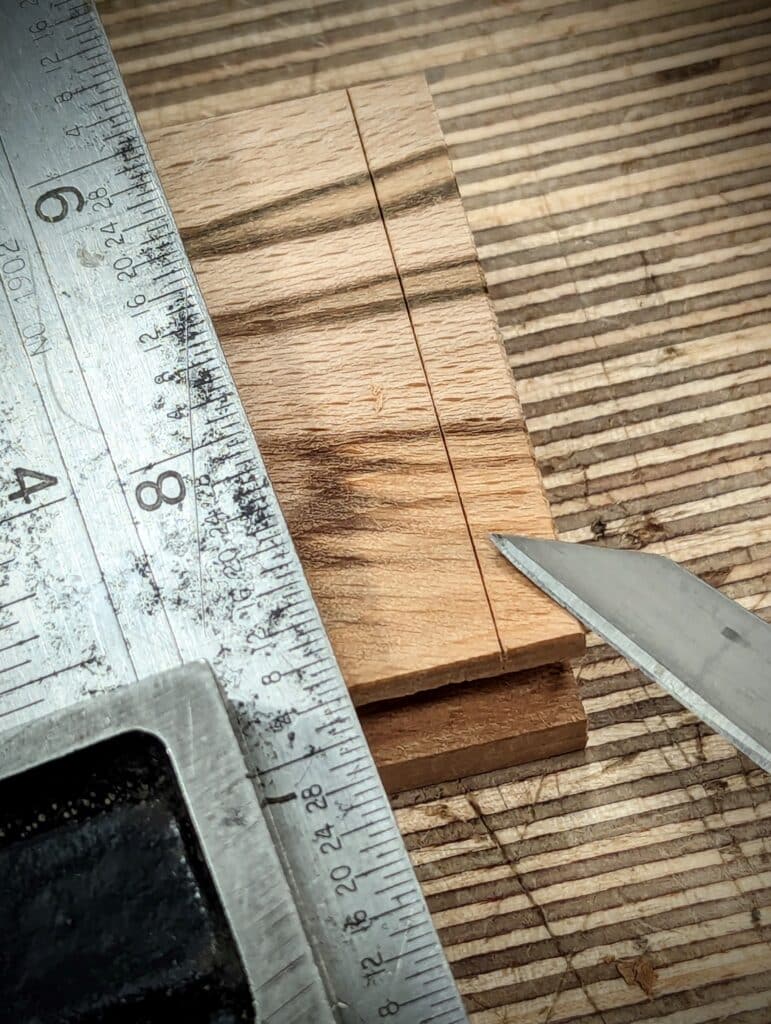
Crispness comes in things we least expect––and then too, as if to surprise us the more, at times we least expect. There comes a sharpness to what we do that defies our ability to encapsulate what we feel yet undeniably it came from our own imperfect hands, causes us to stop, to hold our breath and to then stare at the impossible exactness of it. This crispness identifies the occasion when we surprised ourselves with the precision of a single pass where the chisel or the plane leaves a pristine surface from a single and continuous pass that’s achievable in no other way on earth. This marvel, this experience is known only by woodworkers working with hand tools The outcome, the crispness of it, lifts the soul as I speak it into being with my own soul and by the working of the wood. Sometimes, most times, crispness is difficult to understand. The exactness of what we do sometimes, the pure synchrony of a whole being aligning mentally and physically, is inexplicable with words and so we remain, at best, almost speechless.
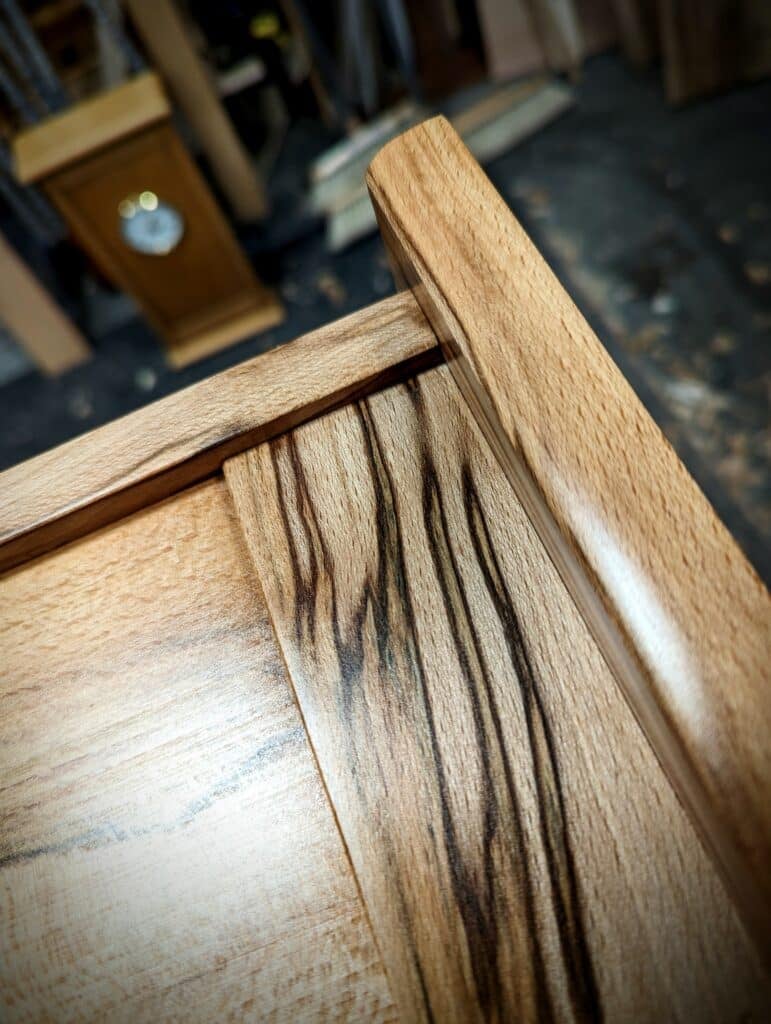
The art in craft is seldom considered art, but craft is the physical art of work and art of our kind is no different than all other art forms. Art demands that we work to order: Every brush stroke and striking pencil, notes played and assembled on a score sheet is our acknowledged order of all we do. It’s no different in the placing of the chisel, the planing of wood and the saw strokes taken in the reductive process of making. Every process in woodworking is a reductive process that begins with the killing of a tree, the slabbing of it and then the levelling and smoothing of it ready for greater reduction in the joinery and fitting processes. Whether you make a cello, a kayak, a dining chair or a bench to work from, the first reduction comes with the sharpening of the saw and the axe. From this point on we must perform the interchange of two reductive practices and alternate between the two. By filing and honing we abrade our cutting edges to increasing levels of fineness so that we optimise our ability to cut wood. The next reductions come in our cutting into the wood to remove the excess. This reduction brings smoothness but more than that we remove any and all distortion in all surfaces and this leads to the reduction of joinery.
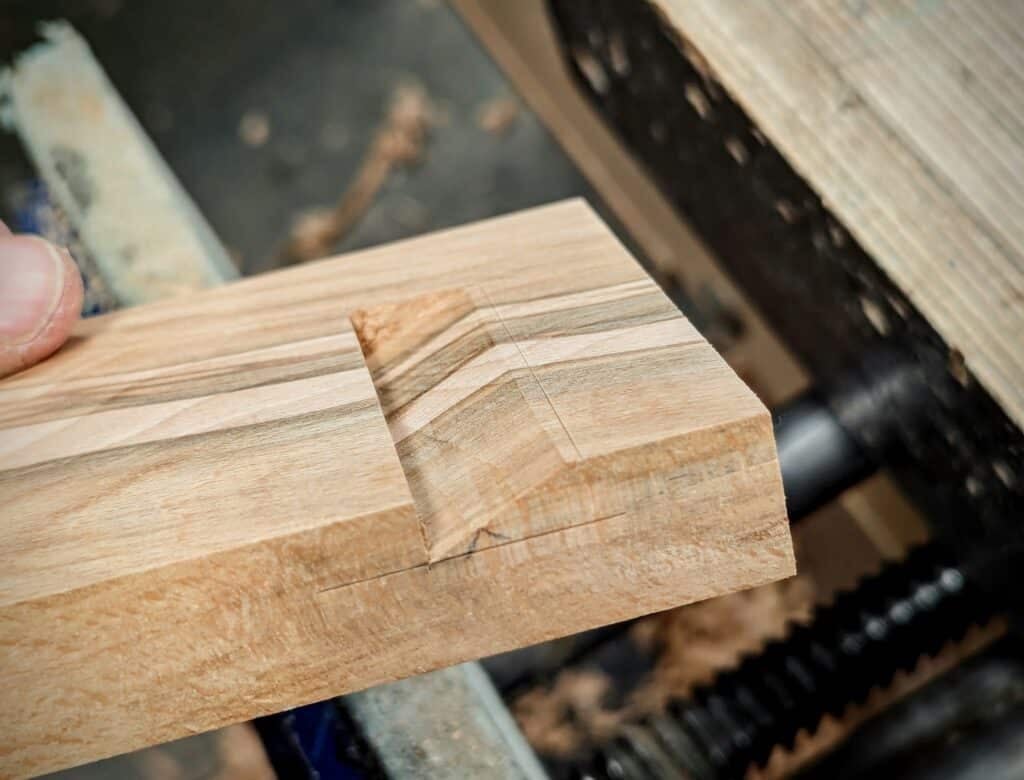
It’s not what we make that is of primary importance but the how of it. How we make anything determines the outcome and this is the reason I pursue handwork with such a passion of self high demand. At the end of any given day, in the making of all things, I can say quietly or loudly to myself, ‘I did make it.’ My self declaration says I put the whole of my being into this piece and every single pressure applied through each tool to the wood came from my own body. I heard the shavings part and the chisel in the paring cuts. I felt every single parting take place and persevered until the surfaces were smooth and the joints came together with crisp precision. hearing and seeing these things, smelling the wood and touching it are all unfiltered and pure. No face masks an no ear defence to block out contamination because the atmosphere is always clean and clear. The perpetual attachment to this way of working perpetually refines me as the maker. I look for no other way. Why? Because I arrived!
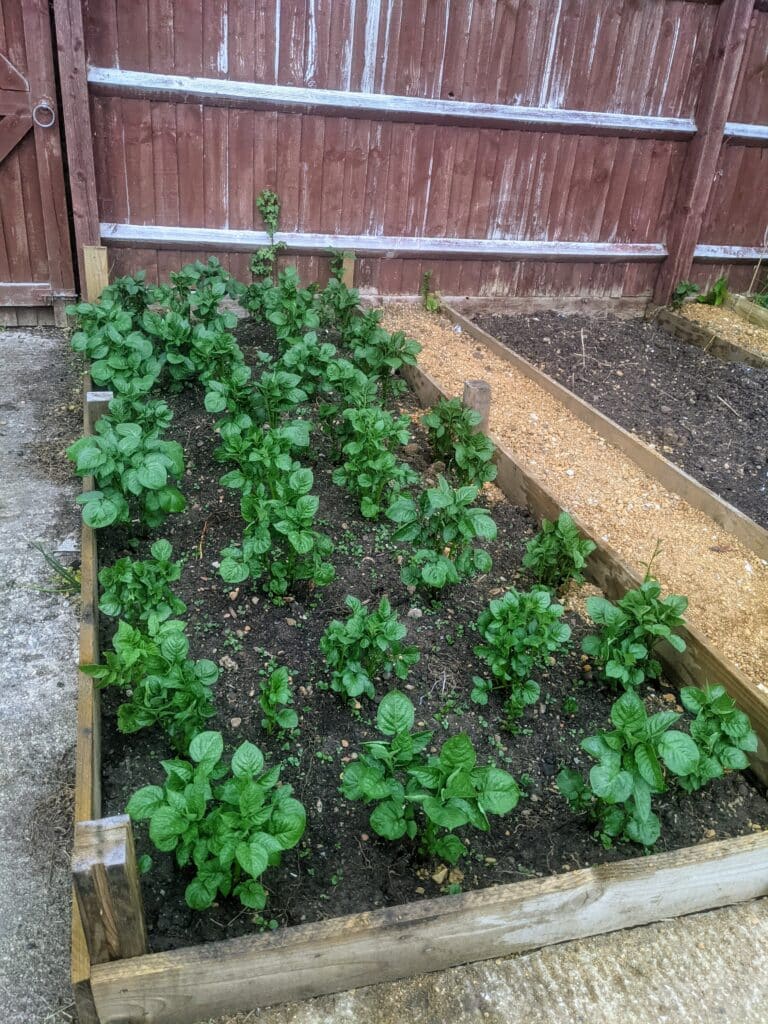
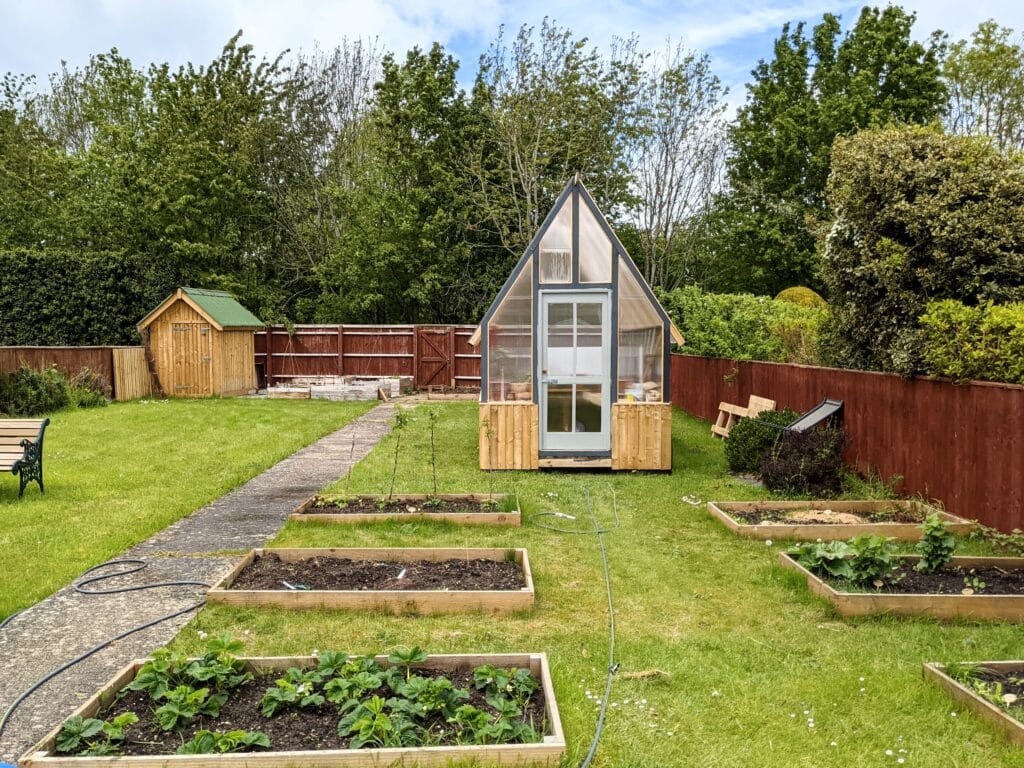
In the digging of soil for a garden bed the earth reveals its hiddenness in more than the mind can ever consider. For this reason alone I plant my garden expecting food to grow; when the flowers fade I uproot the root vegetables and pick the fruit of different kinds. Strawberries and raspberries, tomatoes and such are usually prolific throughout the weeks of our English summer. It’s nice to start the day there considering the ripening of how we plant and water and then where the increase comes from. It costs so little when you follow the art and practice of diligence. My methods may be considered outdated, archaic, but the joy of making the earth ready earlier and then connecting to the growth as the season peaks shows me that none of my early work is ever in vain. In all things craft there is the period of readying by steady work that cannot be ignored or neglected without consequence. I rotated my beds each year and worked new compost from the farm friend I have into the soil. The deep digging wrote its future worth in a tilth that sent the roots deep and the yield higher than the year before and the year before that and so on. Sending the spade-fork ten inches deep without even using my feet settles the matter of planting, weeding and water retention. I throw in the seeds and up come the plants. I try to process the effort that so defies a word I search for and I find no other than ‘crispness’. There is a crispness to it, you see. A sort of exactness.
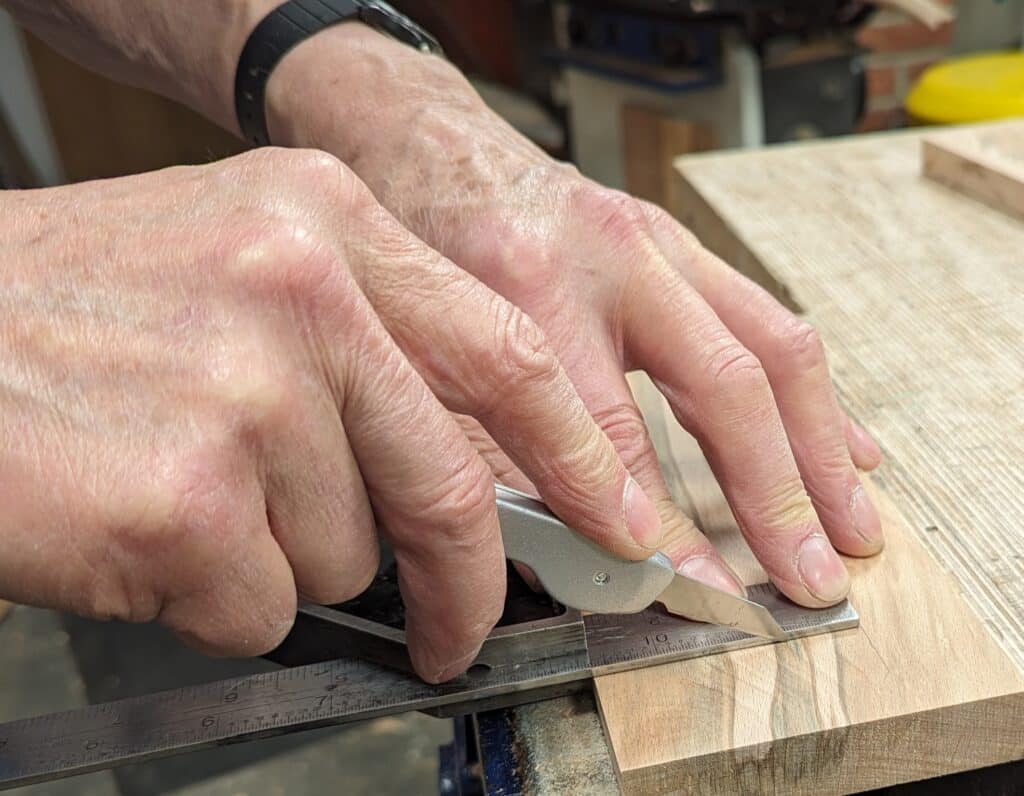
Woodworking by hand requires the constancy of making ready which always begins with the sharpness of our cutting edges, marking points in gauges, our pencils and the first few millimetres of our knife edges at the point; many woodworkers never experience true sharpness nor do they establish a truly sharp edge. This basic task seems all the less practiced and thereby less mastered in our present age and those that do very often complicate what should be the simplest, quickest task of all taking no more than a single minute or less per tool’s edge. Four chisels taken from dull but not ill treated to so-called surgical sharpness takes me under four minutes. It’s a machineless process with no protractors or sliding bevels needed and my macro-cambers follow hundreds of years of woodworking tradition. We hand tool makers soon realise that without sharp edges and crispness in our work we should give up and machine every process. If we are not prepared to keep sharp edges then we will never achieve the quality we strive for.
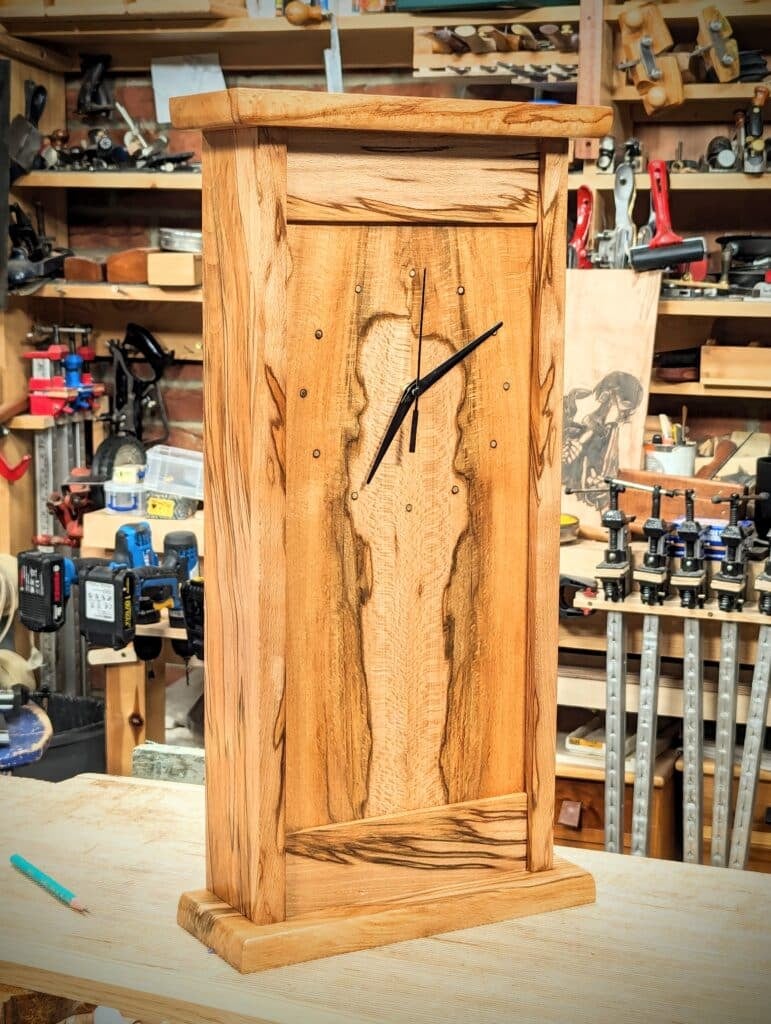
Crispness comes in many forms: the pencils I draw and lay out with, the aligning of edges and faces, a dozen more things such as that. I can barely feel the lateral lever move under my thumb but the smallest fraction brings the blade of my planes into perfect parallelity yet I rarely look to see if it is out nor whether it aligned after the change I make. It’s more the sound and feel coming from action on the wood that I first sense even though no stroke is taken. By this minor impression I’m guided to move the lever accordingly. I change the depth of cut by sound alone and take off thousandths of an inch or centimetre with a part-turn I know to be exactly what I need. This comes through practise over time. I take myself by surprise many times in a day when I do something exactly opposite to the norm to achieve a better result. The pull instead of the usual ordinary push. The softer saw strokes prefacing the deeper penetration that follows by the making ready through graduation. There’s a press and compression that ‘feathers in‘ a plane stroke to narrow one side of the shaving over another. All through the day these crispnesses keep coming yet I seldom think this or that through the filter of my mind and I have never seen 95% of them written down for others to follow. Why is this? They were always passed from man to boy in spoken trust. A small voice here and there, a challenge, a careful passing word or even a gruff shaking, the flicking and clicking of thumb and finger as a disapproving ‘tsk, tsk!’ You might never know such things going forward but the sensing that a man stopped, said no word but waited for a changed attitude in a youth until he achieved the result needed to succeed. Even without such ancients holding the keys to our craft, this unspoken guidance can still come to us if we are sensitive enough to listen and question the whys of our working. Such growth will come to us all when we put down the rulers and the mechanical presets to own the intuitive of what we must ultimately experience. Logic seems often only to prove what we might do without it. I find this true of science too. Rarely has science told me much except to prove what I already grew to know. Life working explains all things to an inquisitive search for answers. The friction between the sole of a plane and the wood’s surface causes something commonly termed chatter that’s a thousand times more likely than any thin cutting iron ever will. Of course, it’s not chatter at all. I have never retrofitted my plane irons for thicker irons because I have never once needed to and in 60 years of daily making as a lifetime woodworker making furniture I have never had a thin iron that ‘chattered’ the surface of my work. Plane chatter is a rare phenomenon often called chatter but that’s not it. I won’t go into that here.
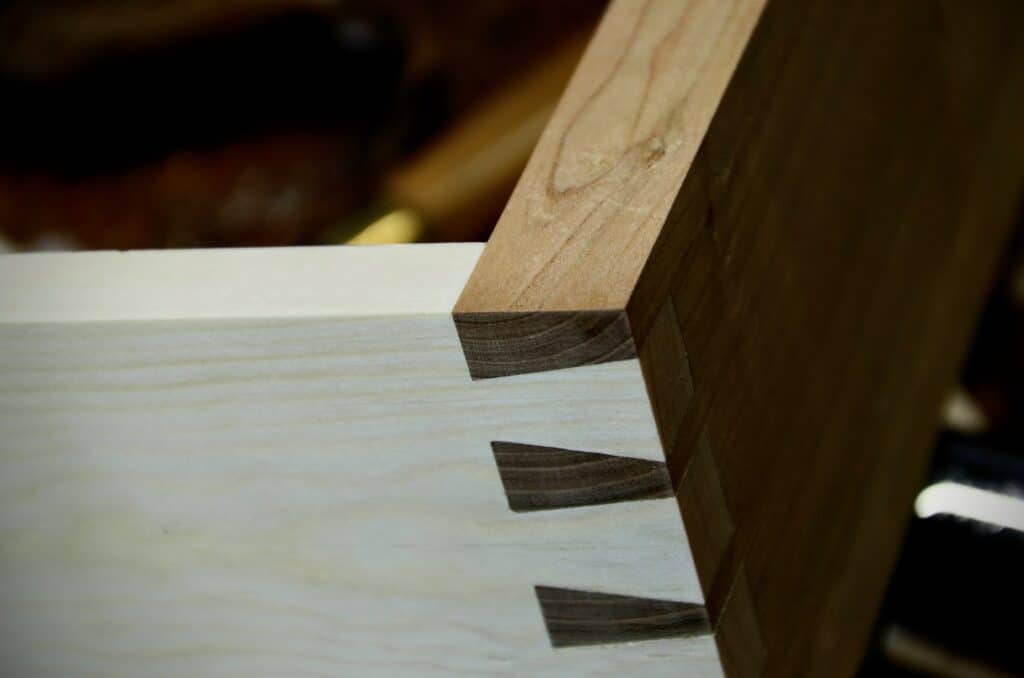
Crisp outcomes to my work come from a readiness to repeatedly sharpen all of my tools no matter how high the demand of the wood or the work. A dull plane that stops cutting because of neglect is testimony against the craftsman. Sharpening never waits for a lazy craftsman and to sharpen a plane, a chisel and even a saw if need be should happen just before dullness is felt. In a given day I generally find myself sharpening after every hour or so of use, perhaps much less if the work demands it. Sharpening is never onerous, never interrupting and never unnecessary, it’s always a part of the process of making. By this we achieve crispness in every element of our working.


Lovely Paul. I do like your greenhouse, it’s a quirky shape that fits the garden nicely.
Do you ever find the time to do nothing? I sat on the floor last week for two hours doing nothing and trying to think nothing (meditation, I guess). It became clear that I should practice it more. I wondered if it was ever something that you practiced? You always seem very active, constant, if you like.
It sounds like you have discovered “nixing” or niksen: a Dutch verb which means “doing nothing”. There’s even a book about it by Olga Meching; “Niksen: Embracing the Dutch Art of Doing Nothing” published in 2021. Cherish your periods of niksen.
Queen Victoria is said to have asked a shepherd on her estate in Scotland what did he do his reply was “Sometimes I just sits and thinks and sometimes I just sits”
As to the “quirky shape” of my greenhouse, nothing is accidental:Taking into account your latitude and adding 20º gives you an angle that will be close to perpendicularity with the sun during the winter. Subtract 45º from the number to establish the minimum angle that will transmit the majority of light with the least significant reflection. The steeper pitch the more light- and heat-gain optimises the functionality of the greenhouse in low-light low-heat areas.
Not really. I find myself being considerate of every word I use to choose each one for its depth and meaning. This is always meditation. When I work, I do, as I say in the article quite clearly, stop and plumb the depths of my actions. Do I do this in the middle of a video? Of course I don’t. As to whether I take out time to meditate for the sole purpose of just doing nothing. No, I don’t consider this to be fruitful. I take time out for my family, for walking, for sketching, photography, writing, cycling, etc. I do these things every single day but they are continuous changes where I slip seamlessly from one to the other as part of my working. I have never found any benefit from being idle and self-centredly focussing on myself. That said, that’s me and i understand that my work is not and never has been the kind of work people are often doing just to make a living and pay the bills. Not everyone can pick their lifestyle and live it for 60 years. so meditation would be a great way to isolate pockets of recovery for themselves.
Every time I see your work it makes mine look so bad, but it gives me something to shoot for. Your thoughts and work are outstanding. Please keep doing and sharing your experiences with those of us who idolize you knowledge and skills.
Bob
These words that have been writing today are the words I needed to read to keep my improvements growing in the right direction. Each day for me is a new day to reach my goal of becoming better in my woodworking goals.
Paul,
Seeing you using your Stanley folding knife reminded me to mention that Home Depot has the Stanley 10-049 folding knife on their website for $10.18 with free shipping. Based on your recommendation I purchased one and have been using it in place of my spear point marking knife. It’s everything you said it was, so I ordered two more. I would have never known the Stanley folding knife existed if it weren’t for your blog. Thanks for the great tip.
Beautifully written, Paul. It’s not only true of woodworking; I recognise it in creative writing and software engineering. Here is someone else saying the same thing.
‘The craftsman isn’t ever following a single line of instruction. He’s making decisions as he goes along. For that reason he’ll be absorbed and attentive to what he’s doing even though he doesn’t deliberately contrive this. His motions and the machine are in a kind of harmony. He isn’t following any set of written instructions because the nature of the material at hand determines his thoughts and motions, which simultaneously change the nature of the material at hand. The material and his thoughts are changing together in a progression of changes until his mind’s at rest at the same time the material’s right.’
Pirsig, Robert M.. Zen and the Art of Motorcycle Maintenance: 40th Anniversary Edition (p. 148). Random House. Kindle Edition.
I read that Persig Zen book decades ago and was very disappointed. I made myself read it all, but it didn’t improve 🙁
I’d previously read a much better book IMHO: ” Jupiter’s Travels” by a journalist who motorcycles across the world on one of the last Triumph motorcycles before the factory closed ( and much before the recent rebirth of the Triumph name/brand). I read it in hospital after a climbing accident and loved it. I gave my copy to another young patient I’d got know, when I left.
Good on ya mate! Grow your own!
Here in the US, some folks don’t know where raisins come from..
“Where are the raisin bushes?”
Couple of generations and we’ve lost touch w/ our world.
Living vicariously.. on screens.
Btw, I think your greenhouse is a work of art, beautiful!
unlike you i am retired now from my one man shop furniture making. but having a 1500sm section and a 370sm house means i am never idle. my wife is not very mobile so most of it now falls on me. i deliberately replaced most of the specimen trees with fruit trees over the years and built large raised garden beds for vegetables. here in nz where i am, we grow all year round, so practically never buy vegetables or fruit. there is a peace and tranquility in the garden doing mundane jobs that rests the soul. as an example we have pears, 4 types of apple, oranges, lemons, limes, peaches, blueberries, olives and grapefruit. if we had far fewer people on this crowded earth far more people would be able to have a piece of land to cultivate.
I attended a craft fair last weekend and met a few people who were masters of their craft.
One man was making pictures by pyrography ( wood burning) and he just started on a blank piece of plywood and “ painted “ a picture from his minds eye. It was incredible to watch him work. Another “master” of the craft was a portrait artist , she can sketch from a picture or something she has seen on canvas perfectly. You would swear it was a photograph!
Both artist made “crisp” images, way beyond my capabilities.
It’s something to strive for, some people have the talent and drive to achieve this level of art.
The best I can do ( it seems) is to mimic such mastery by using machines or technology and even then I fall short of the mark.
I do appreciate the time and effort to master these skills. I’m too old to learn for myself, I had to do other things to raise and care for my family. But I will keep on trying.
Interesting info about the greenhouse! I’ve long wondered why so many architects don’t seem to know those things, or use them in their craft.
Oh, and I like that clock! The way you’ve chosen to use the spalting really makes it “work”.
I love to see a video on making that greenhouse!
The clock looks great! Is that a shellac finish?
Can shellac hold up to the humidity shifts encountered in a bathroom? I’m thinking of a large mirror or wall shelf.
Shellac is my favorite finish but I am uncertain of its limitations. Thanks
It’s not shellac and the clock is intended for normal household situations. Try some other finish that has high levels of water resistance is my suggestion, Jon. Lots to choose from.
Hi Mr. Sellers, I would love it if you were able to do one project with wooden planes as some of us have only those (and they are cheap or you can make them) and I know I would benefit greatly from you teaching a project. It’s all the subtle little things you do that make the biggest difference I find. Thanks very much for all you do!
I find it sad that many people have never tasted the vast difference in taste between home grown produce and supermarket offerings. One of my favourite meals is freshly dug new potatoes, boiled with a sprig of mint served with fresh peas and broad beans, and a knob of butter. The difference between garden picked strawberries and supermarket ones is also huge. You can grow your own for taste, rather than looks. It seemed to be a lot more common to do this in my youth than it is now.
Hello Paul, I follow you with great interest and I am about to order your router plane kit because it seems to be a most important tool for clean and precise furniture work. To buy a classic or modern copy is incredibly expensive for a pensioner like me. I was fortunate to get 3 free pieces of sapele yesterday each measuring 12″x6″x1.75″. I am very keen to follow up with a rebate plane and a grooving plane or two. The wood seems dry but it is heavy, how can I tell if it is dry enough. I would like to re-saw and make some saw handles too. I suspect I could make quite a few tools or handles – can you recommend the best way for a novice like me to proceed with DIY tools. I have decent planes, chisels and clamps.
Mike
I recently made another saw handle using 1″ thick Beech. If you search on the WWW for saw handle templates you will find once that you can download for free. I used Blackburn tools ( I think). I simply stick the template onto the timber and then cut it out using a tenon saw and mostly a coping saw. a alternative would be to draw around an existing saw handle. I had to modify the one I used to suit the saw slightly. Then for the shaping I used a chisel, rasps, files and finally sandpaper. before you get too far into it I would cut the slot for the blade and work out where the holes for the fixings will go. ignore the ones on the template, match them to the existing holes on your saw plate. When I was happy with it I gave it a few coats of shellac. I didn’t have the correct brass fixing screws and nuts. I modified (shortened) connecting bolts and nuts (the ones Paul’s router design uses), simply because I have loads from another project.
Hope this helps
Keith
Thank you Keith that was my plan for a spear and Jackson saw rip saw and tenon saw. Could I get both from 1 piece of my hardwood blank if so it would leave me a 12x6x0.5inch blank that I could use for wedges or part of a box construction. I have two more blanks that I want to use for a router plane, a rebate plane and a grooving plane. It was not easy to source this wood and the fact I got it for free makes me feel even more responsible for using it wisely. Does my plan make sense or could I do better. most hand tools seem fairly priced but these speciality planes seem to be really overpriced for what they are. I live in France now and cheap used tools do not seem to be available here.
Hi Mike
Unfortunately 1 1/2 ” here doesn’t give you 1″ plus 1/2 “. There will be less due to your saw kerf and planing. You will need to judge for yourself how thick you want your saw handle to be.
I think that you will struggle to get your 2 handles out of your 12 by 6 piece. My saw handles are typically 8” long, you might need more to allow for grain direction. It might be possible to get 2 tenon saw handles, especially open ones. What you really need to do is download templates and see if you can wangle it.
It is still possible in the UK to get good tools cheap. My Record grooving and rebate planes cost me £10 a few years ago. Probably 10 years ago now I saw router planes for the same price, I think Paul is to blame for the increase. However I nearly bought a Stanley one a few months ago for £30, but decided that having made Paul’s version and 2 of my own design using Allen key blades and brass bodies I thought I didn’t need another.
You might want to watch Paul’s plane handle making video as some of the techniques are the same, indeed it was this that inspired me to make a saw handle initially.
I just checked prices in the local timber store. Sepele is about twice the price of Beech, but appears to be unavailable at the moment. Although I can generally access cheap tools, timber is not cheap here, virtually doubling in price over recent years.
Best of luck
Keith
Every brsush stroke and striking pencil, notes played and assembled on a score sheet is our
******
acknowledged order of all we do.
Sorry but typos and spelling mistakes jump out of the page at me.
Your work and yourself are truly inspirational. Thank you Paul
No problem and thanks. I went back in and fixed what I saw but no more. It’s the flow that takes me quickly along and less the grammar. I was and still am excited about that article. Not really sure where it came from or why.